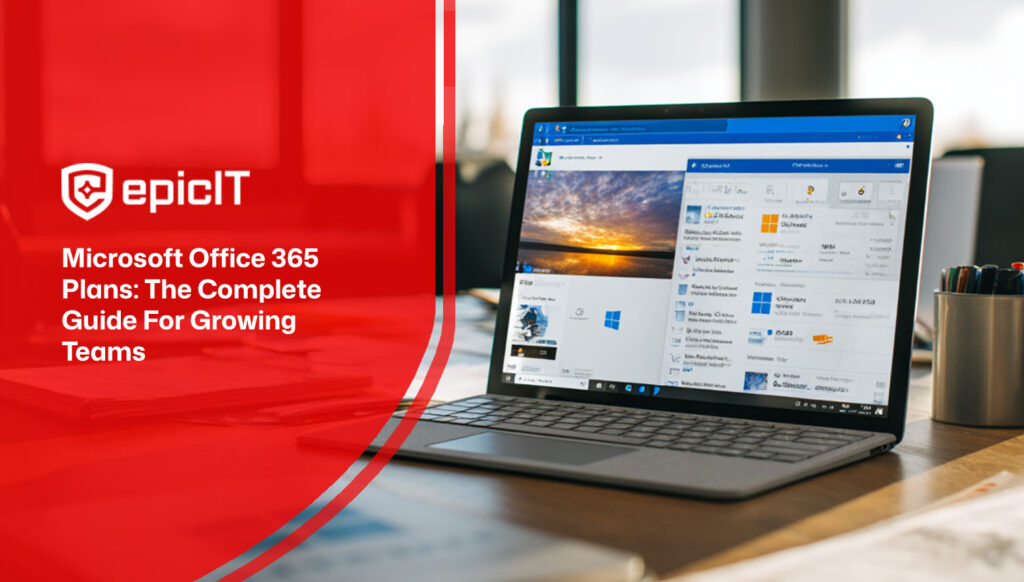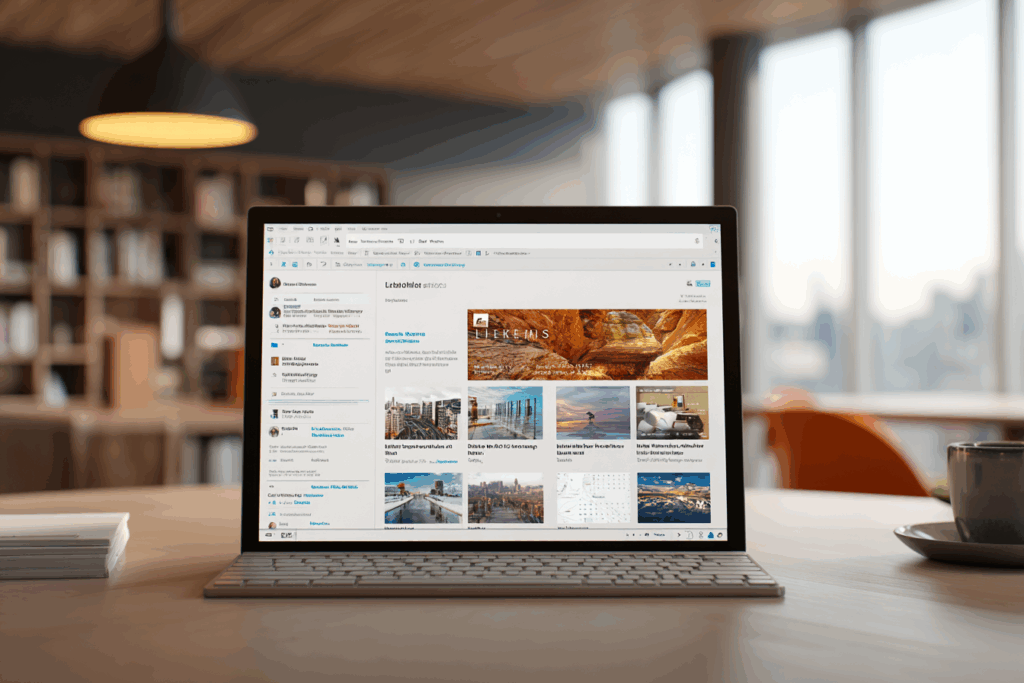
If your organisation is moving from scattered tools to a unified cloud workspace, you will want a clear view of Microsoft Office 365 plans and how they differ. The right choice balances productivity features, collaboration, device management, and security without adding complexity.
In this guide, we break down Microsoft Office 365 business plans, explain what each tier is best for, and outline a sensible rollout that keeps change simple for your staff.
Most small and mid-sized businesses evaluate three core options. Business Basic focuses on web and mobile apps with cloud email, Teams, OneDrive, and SharePoint. Business Standard adds the full desktop Office apps for users who need richer features. Business Premium includes everything in Standard, plus advanced security and device management that help an MSP or in-house IT team protect users and data.
Larger or more regulated organisations often consider Microsoft 365 E3 and E5. These plans extend compliance, analytics, and threat protection for environments that require deeper controls. When leaders compare Microsoft office 365 plans, the decision often comes down to how much security and management they want built in rather than added later.

Exchange Online powers business-grade email with shared calendars, address books, and anti-spam protection. Mailboxes sync across desktop, web, and mobile so staff can work from anywhere.
Word, Excel, PowerPoint, and Outlook are available as web apps in Business Basic and as both web and desktop apps in Business Standard and Business Premium. Desktop apps suit power users who work with large files and advanced features.
Teams brings chat, channels, meetings, and calling together. Files shared in Teams live in SharePoint and OneDrive, which keeps conversations and documents aligned. Whiteboard and Loop components make live collaboration easier.
OneDrive provides personal storage while SharePoint provides team sites and document libraries. Version history, permissions, and shared links reduce duplicate files and support compliance.
Business Premium adds Microsoft Intune for device management, conditional access policies, and advanced identity protection. These controls help you enforce consistent settings across Windows and mobile devices.

If users mostly work in a browser or on mobile, Business Basic can be a cost-effective fit. They gain email, Teams, and cloud storage without the desktop apps.
Staff who create and edit documents all day are better served by Business Standard. The desktop apps deliver full functionality with local performance and offline access.
If your operation handles customer data, payments, or regulated information, Business Premium is often the right baseline. Device management, conditional access, and enhanced protection reduce risk without adding new tools.
When you need advanced eDiscovery, audit controls, or endpoint detection and response, E3 or E5 is worth a look. These Microsoft Office plans are designed for more stringent requirements
List teams and the tasks they perform. Identify who needs desktop apps, who can work in a browser, and who handles sensitive data. A mixed licensing model often saves money while meeting needs.
If users work across laptops, tablets, and phones, per-user licensing ensures a consistent experience. If you manage shared devices, plan policies that keep sign-in secure and simple.
Even small businesses benefit from multifactor authentication, conditional access, and device compliance checks. Business Premium bundles these features so they are easier to adopt.
Choose Microsoft Office 365 business plans that scale with headcount and new sites. Licensing can be adjusted monthly, which helps finance teams manage costs during hiring cycles or seasonal changes.

Epic IT designs and delivers Microsoft Office 365 plans that match your goals. We assess your current tools, map mail and file migrations, and recommend the right mix of Business Basic, Business Standard, Business Premium, or enterprise options. We configure security baselines, set up Teams and SharePoint, and train staff so adoption sticks. With managed services, you get continuous improvement rather than a one-time setup.
To explore how we can help, visit our services page. If you are ready to plan a migration or a security uplift, start a conversation with our team, and we will guide the next steps.
Choosing among Microsoft Office 365 plans is easier when you start with user needs and security goals. Business Basic suits browser-first roles, Business Standard supports creators who need desktop apps, and Business Premium brings stronger security and device control. With a clear migration plan and practical training, your staff will spend less time hunting for files and more time serving customers. A thoughtful rollout builds resilience and reduces risk while keeping costs predictable.
They are per-user subscriptions that bundle Office apps, email, Teams, storage, and security. Business Basic is web and mobile apps, Business Standard adds desktop apps, and Business Premium adds device management and advanced protection.
Business Premium includes Intune for device management, conditional access, and extra protection features that help you enforce policies across laptops and mobile devices. Higher enterprise plans add advanced threat detection and compliance tools.
Yes. Many organisations assign Business Basic to frontline users, Business Standard to office staff, and Business Premium to roles handling sensitive data. Mixed licensing controls costs while matching needs.
Usually not. OneDrive and SharePoint cover personal and team storage with versioning, permissions, and search. Structured sites replace shared drives and reduce duplicate files.
We scope the right Microsoft Office 365 business plans, migrate email and files, configure security, and train your users. Our managed services keep your environment updated and optimised so you continue to see value month after month.